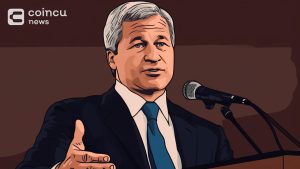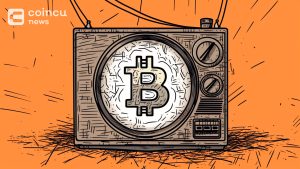How beneficial is Bitcoin’s recent sensitivity to rate hikes?
Bitcoin has so far been very sensitive to any Federal Reserve (Fed) decision. As shown by the massive price sell-off as a vehement reaction to inflation.
Bitcoin 4 hour chart | Source: Trade View
This has caused many to worry about how will fare in a rate hike environment as the Fed considers four rate hikes in 2022.
While BTC’s performance over the past 2 months doesn’t seem all that promising, a report showing its recent vulnerability to inflation is a hugely bullish sign indeed.
Rising interest rates are forcing bitcoin to behave like other inflationary assets
What will happen to Bitcoin in a rising interest rate market? report CoinShares’ latest “Digital Asset Perspective” attempts to answer that question.
After nearly a decade of unprecedented quantitative easing (QE), the market is starting to face the risk of inflation hitting the US. This is also worrying the Fed, forcing it to consider tapering quantitative easing earlier than expected.
To curb inflation, which they believe will inevitably hit, the Fed is considering four rate hikes this year instead of the two originally proposed for 2021.
The last time the Fed hiked rates was in 2015 and the price of bitcoin rose by more than 51% in 6 months. As borrowing becomes more expensive, more and more people are flocking to Bitcoin as a hedge against volatile markets.
However, CoinShares analysts believe that Bitcoin will not repeat this pattern this time.
“We believe Bitcoin has matured significantly since then and is likely to behave differently, in line with other (inflationary) real assets.”
Therefore, to understand how Bitcoin will fare, we need to look back at other inflationary assets in previous periods of rate hikes.
CoinShares identified the last 5 periods, all of which have seen either rallies after a period of decline or relatively low interest rates for a long period of time. In December 1976, December 1986, February 1993 and June 2004, gold and other industrial commodities all showed surprisingly consistent performance.
Performance of real assets in the interest rate cycle | Source: CoinShares
With a fixed supply and price in US dollars, Bitcoin will most likely behave similarly to gold and other inflationary assets.
In December 2021 and January of this year, Bitcoin reacted violently to inflation, and as the likelihood of a rate hike escalated, the price plummeted more than 30% from its peak. This means that any upcoming rate hikes will drive prices down, but each subsequent hike will trigger a less intense recession.
However, after a period of bearish volatility, Bitcoin is very likely to stage a strong recovery. This is consistent with how most real assets behave in similar interest rate cycles, as well as Bitcoin’s inverse relationship with US dollar strength.
The US dollar fluctuated sharply, particularly after periods of interest rate hikes, losing an average of 7% in value within a year.
With the Fed likely to hike rates very sharply, CoinShares expects the US dollar to see a similar sell-off this year.
As the US dollar weakens, much of the market will turn to alternative assets, with Bitcoin being the obvious choice of all cryptocurrencies. The Fed’s ability to defy censorship and spiral out of control makes it an attractive hedge against inflation. If so, CoinShares believes other real-world assets like gold will follow suit, experiencing periods of explosive growth despite rising inflation and a falling dollar.
Join CoinCu Telegram to keep track of news: https://t.me/coincunews


















